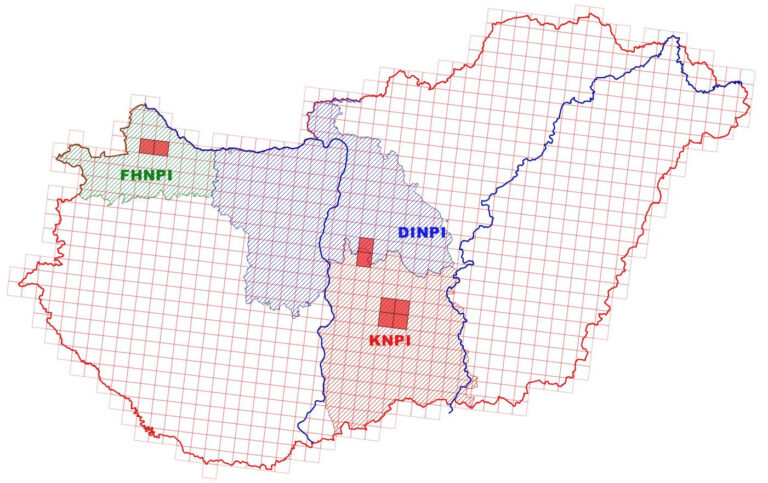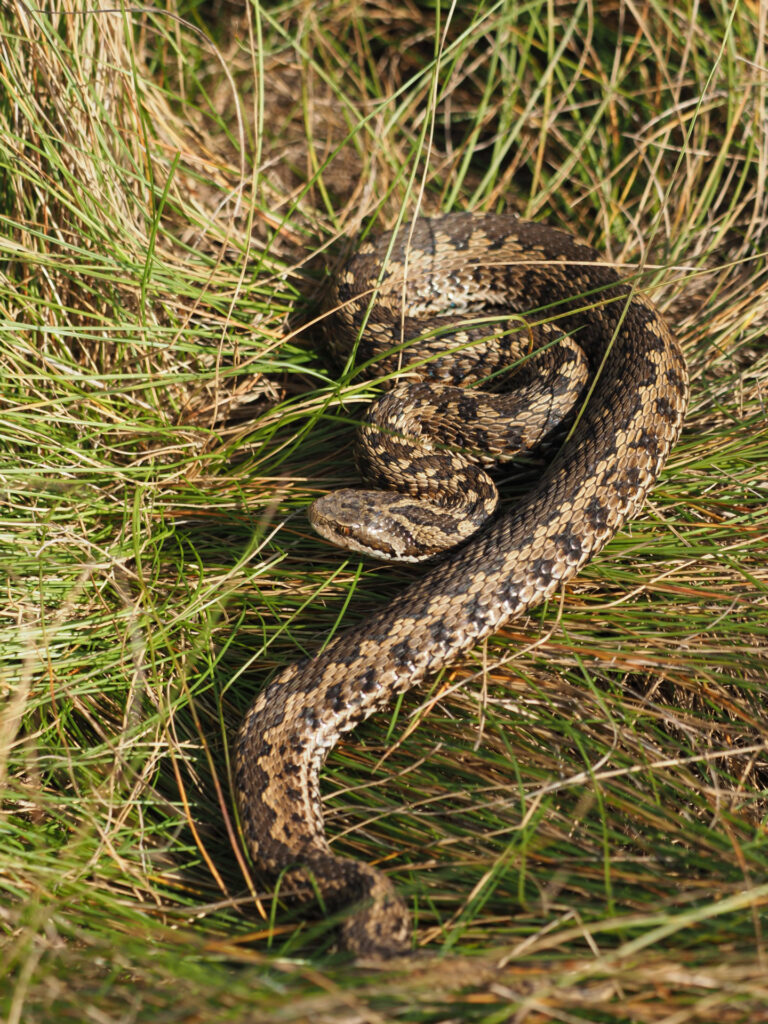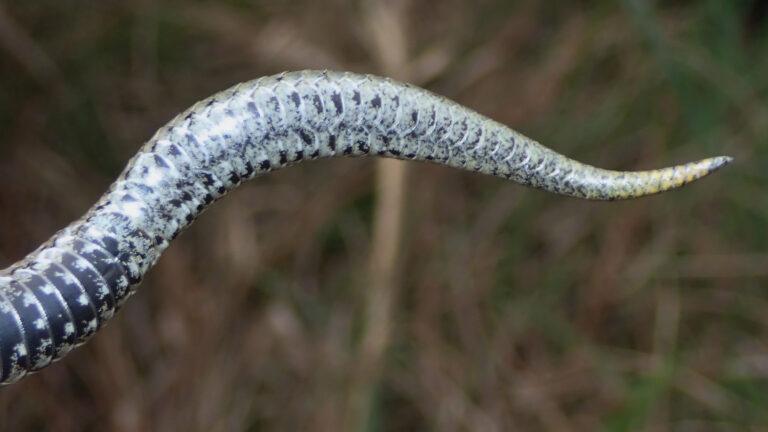Hungarian meadow viper
Hungarian meadow viper (Vipera ursinii rakosiensis) is a member of the order Squamata, suborder called Serpentes and the Viperidae family.
The Hungarian meadow viper is a steppe form of the Vipera ursinii species group. This snake was was first described by the prominent Hungarian zoologist Lajos Méhely in 1893 in a meadow on the banks of the Rákos River in Budapest.
The Hungarian meadow viper’s total length is up to 60 cm with a Easily distinguishable from non-venomous snakes by its vertical pupil and dorsal zig-zag pattern. Ground colour grey or yellowish-brown with an irregular dark brown, usually dark-edged, zig-zag pattern from base of head to end of tail. The pattern may break up. Dark blotches along the flank. Belly grey with off-white spots. The snout has a single apical scale, the head is weakly defined from the neck, compared to the European adder. Males and females are similar; distinguishable only by tail length and subcaudal scale numbers (males have longer tails and more subcaudals).
Sexual dimorphism in its colouration is much less evident (Street 1979; Shine and Madsen 1994). The grey or brownish ground colour is usually lighter dorsally and there is also a dark wavy band along the back of most individuals. The very small eyes have the typical vertical pupils of vipers.
Male or female?
In the case of Hungarian meadow viper there are no explicit difference in color between the sexes. Male and female vipers can be most reliably distinguished by the length and shape of the tail. A male snake’s tail is usually thicker and longer than a female’s.
Hungarian meadow viper only occurs in the Carpathian-Basin. In Hungary only fragmented populations can be found in Hanság and Kiskunság.
The meadow viper was commonly found in eastern Austria until the early 20th century, but due to cultivation of habitats it became extinct in this region. The last recorded sighting was in 1973 in a meadow near Lake Fertő. Outside Hungary only one remaining population can be found in the Transylvanian region of Romania.
Hungarian meadow viper (Vipera ursinii rakosiensis Méhely, 1893) is a small, steppe-form member of the so called Vipera ursinii species group. It was described as subspecies according to morphologic and biochemical data. First the French or Italian meadow viper (Vipera ursinii ursinii Bonaparte, 1835) was described, that occurs in Abruzzi Mountains of Italy and on Mont-Ventoux and Montagne de Lure in South-France. The Hungarian meadow viper is the closest related to this mountain subspecies according to morphology. Other mountain subspecies is the Carst viper (Vipera ursinii macrops Méhely, 1911), wich occurs in Dinari-mountains and the Greek meadow viper (Vipera ursinii graeca Nilson & Andrén, 1988) from Pindos-mountains. The Moldavian meadow viper (Vipera ursinii moldavica Nilson, Andrén et Joger, 1988) has an interesting distribution as some populations occur in plains of Danube-delta, with higro-halophyl vegetation, while others on steppe habitats in the surrounding hills of Iasi.
Hungarian meadow viper feed mainly on grasshoppers, crickets and small-sized lizards. Adults consume vertebrate pray such as nestlings and rodents. Venom of the species is mainly harmless for humans, their mild venom only immobilizes small-sized prey.
They are mainly diurnal which means that they do most of their activity in daytime and mainly active in the morning and late afteroon outside mating season. They are tending to be rather timid and don’t like being exposed as vipers predated by many other species especially during its first few years.
From October to March snakes spend the winter hibernated in underground burrows. Several individuals may use the same burrow together with other amphibian and reptile species.
In the middle of March, 2-4 weeks before females, male vipers emerge from their burrows and after a few weeks they start shedding. Females shed their skins after the mating season is over. During the shedding process, snakes’ eyes have a blueish colour and their vision is reduced. This is a result of a fluid build up between the old and new skin, separating the layers and preparing the old skin to be able to come off. In this period snakes tend to be around their well-known hiding places so when danger comes they can withhold to a safe shelter a soon as possible.
After brumation males spend the day basking in the sun, they rarely feed or do not eat at all. Breeding season starts at the end of April or at the beginning of May. Males find females by following their scent trails, sometimes tracking them for hundreds of meters a day. Competing males usually engage in a special non-violent combat during which they raise up the front part of their body vertically, make swaying movements and attempt to push each other to the ground. Winner have the right to mate with the female nearby.
Hungarian meadow vipers are ovoviviparous. It means that the eggs are fertilized and incubate inside the female and she gives birth to average 10 live young usually in the end of July or beginning of August. The young are usually born encased in a transparent sac from which they must free themselves. Newborn snakes shed their skin right after they were being born and are independent soon after birth. Neonates measure 10-16 cm in total lenght and weigh 2-4 g. Vipers shed their skin every 4-6 weeks in their first year of life. Adults only shed three times a year: after hibernation, in the middle of summer and before hibernation.
The Hungarian meadow viper is Europe’s most endangered, extremely rare venomous snake, that is particularly sensitive to any kind of habitat change. Today it can be found only island-like populations in some areas. The main factor behind this rapid decline is habitat loss, increasing numbers of mammalian and avian predators and Intensification of agriculture. Hungarian meadow viper was declared protected in 1974 and it is strictly protected since 1988.
From 1992 its conservation value was raised to the highest category, currently at 1 000 000 HUF.
The critical state of this taxa has also been recognized internationally and the Hungarian meadow viper is included on the Bern Convention Appendix II [Council of Europe, 1979 (revised 2002)], and is listed in Appendix I of the Convention on International Trade in Endangered Species of Wild Flora and Fauna (CITES, 2014) and on the International Union for Conservation of Nature (IUCN) Red List as Endangered (IUCN, 2014).
- Smooth snake (Coronella austriaca): The smooth snake’s total (body+tail) length is up to 80 cm. Ground colour grey, greyish-brown or bronze-brown, sometimes almost orange or sandy yellow. A U-shaped mark on back of head may be reminiscent of open wings. Two rows of dark spots on the back and tail. Round pupils, with copper-coloured irises. Belly bluish-grey or reddish-yellow.
- Dice snake (Natrix tessellata): The dice sanke’s total (body+tail) length is up to 100 cm, but usually shorter. Head elongate, and more flattened than grass snake, with large, protuberant eyes on top of head. Pupil round and black, with golden iris. Ground colour greenish-brown, greyish-green or ochre with dark spots or squares in alternate rows. Ground colour lighter towards the belly. Some specimens may be plain (without spots) or jet black. Belly reddish, yellowish or off-white with dark brown or black squares forming checkerboard pattern.
- European adder (Vipera berus): The European addrer’s total length up to 80 cm, males usually shorter. Body short and bulky, tail short, head well-defined. Pupils vertical. Ground colour grey or whitish-, yellowish-grey in males and brown or reddish in females, with a dark (black in males, dark brown in females) zig-zag pattern from head to end of tail. Large dark (same colour as of the zig-zag pattern) blotches along the flank. A conspicuous X or Λ shaped pattern on back of head. Belly is grey, grey brown or black. Underside of tail-tip yellow in both sexes. Jet black (melanistic) specimens are frequently found, especially in lowland populations. The habitat of the European adder and the Hungarian meadow viper do not overlap.
- Grass snake (Natrix natrix): The grass snake’s total length can get up to 120 cm, but generally shorter. Highly diverse body coloration. Ground colour grey, brown, ochre, greenish or black with speckles or blotches of various sizes on the entire dorsal surface. Conspicuous yellow, orange or white partial collar, usually bordered with black. Pupil round and black, with yellow or orange iris. Some specimens have two light, yellow or white lines along edges of back. Specimens in Belső-Somogy may be jet black. Belly white and black chequered. Dorsal scales keeled. k. Males and females similar, but orange belly usually signifies males, which may also have ring markings (ocelli). Young are similar to adults, but sometimes darker.
- The Hungarian meadow viper only occurs in the Carpathian Basin.
- The two sexes can be distinguished by the length and shape of the tail. Male snakes typically have thicker and longer tails relative to body length than females.
- Hungarian meadow vipers are ovoviviparous. It means that the eggs are fertilized and incubate inside the femaleand the young are usually born encased in a transparent sac from which they must free themselves.
Venom of the species is mainly harmless for humans. In the case of biting, altough because of the rareness and shyness of the species is is rather rare, consequences are usually quick and slight.

















